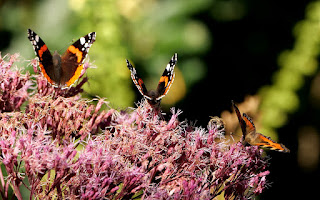~~
I simply can't imagine having a permanently attached strap fitted to the G9 camera body now. I discarded the original Panasonic G9
within minutes! It took far too long to fit and remove for tripod and
indoor use! Nuts! It's 2020. Not the 19th century.
A short lanyard strap for the body and lens, to go
around your wrist, is going much too far. If it is just to get away from a full camera strap.
Your favoured arm would end up dragging like an ape!
Peak Design do a "Cuff" wrist strap/lanyard. I'd consider this as a purely studio safety accessory. In case tired or sweaty hands let go of a heavy and expensive camera. Carrying the G9 + 200mm lens outdoors on a wrist strap would be strictly for young body builders IMO.
After
several walks with the 50-200mm on the G9 I became more comfortable with the
weight. I use the Peak Design 'Slide Lite' strap diagonally across my body.
With the back of the camera body resting on one side of my stomach at hip level.
I can
easily let go instead of steadying the lens constantly with my hand. Which is only
really necessary on very rough ground. Or when jogging to avoid traffic. Just to stop the camera from swinging
about. Holding the lens instantly reminds me of the considerable weight I am carrying. I find it best to just let the camera hang on the diagonal while walking on smooth ground. The weight just seems to disappear.

The
Peak Design "Lite" strap has quick release anchors/buttons/toggles for rapid removal. Though only after some practice in a safe place. Don't try this when NOT at home, folks! Seriously, there is a bit of a knack to pressing and pulling the toggle in and out of the sprung holder. Once clipped in the system feels very secure and could not escape accidentally even under heavy loads.
Removal avoids having the thick, stiff and clumsy strap draped across my
untidy busy desk. Which I have to do while downloading images. Or when I am fiddling with lenses or scouring the endless G9 menus. It really should have its own browser! I haven't managed to get the G9 to talk to my wireless router yet. Or I could download images with the camera sitting somewhere else.
The PD "Slide Lite" strap really isn't wide enough for full shoulder comfort with such a heavy camera/lens combination. [G9 + 200mm zoom.] While being simultaneously
far too thick. More like a lifting strop for a crane! Which is completely daft when the Q/R toggles are on very short loops of
very thin cord. "Weakest link," anybody?

The "Anchors" to use PD's own parlance, are rated at 200lbs or 90kg. Presumably steady state. Rather than shock loading. The strap is probably good for one ton! You get a free camera bottom plate, with anchor attached. Plus and a spare anchor with the "colour change" warning card attached.
I haven't tried the tripod screw, bottom fitting plate yet. Because it would need to be removed to fit another camera/tripod mounting plate. With a heavy lens the camera tends to go nose down anyway. So the bottom fitting plate is probably best reserved for smaller lenses.
The sheer thickness of the strap material makes the end loops unnecessarily heavy and stiff. Not too much of a problem when loaded down with the camera. Though a real nuisance when you want to turn the camera to portrait mode using the eye level viewfinder. The strap instantly becomes a giant anaconda waiting to strangle you! Eek!
It has occurred to me that I can close one loop and have a longer loop at the other end. I shall have to try this to see if it helps. I have had race/rally, multipoint, car safety harnesses with thinner straps than the PD "Lite!" While climbing safety loops would never sell in this foolishly thick, cross section.
This strap reminds me of those [overhyped] "New York safe" bike locks. Obscenely
expensive for such a crude and vulnerable device. No to mention being far too heavy to carry on any, decent racing bike. While simultaneously being
absolutely no use at protecting an expensive bike left alone on the city
streets. Crackers!
The buckles on the PD "Lite" strap do slide nicely. A shoulder load spreader would inhibit adjustment of the trap. So I can see why they didn't fit one. Unfortunately, the bulky buckles also make it completely impossible to borrow a shoulder pad from any another strap.

I went for a plain black to avoid becoming an identikit, amateur photographer. With G9 boldly embroidered up and down the strap every few inches. As the camera hangs high on my chest and all the weight falls directly on my neck. The diagonal strap really is the only way to go.
Overall I quite like the PD "Slide Lite" trap. The overall finish is fine. I just wish it were made of much thinner material. Though wider, to spread the load better on my shoulder. The full width, PD "Slide" strap would be ridiculously heavy and stiff judging by the misnamed "Lite." So I haven't even been tempted to try one. Unfortunately the PD anchor holders do not lend themselves to being removed and fitted to a much lighter strap without any adjustment. One you have discovered your ideal strap length there really is no need to ever touch the buckles again.
These PD straps probably sell solely on the unique, Q/R facility. Which was the only reason I ordered one in the first place. How else can you differentiate them from any other strap? It's just a camera strap, after all!
~~























































